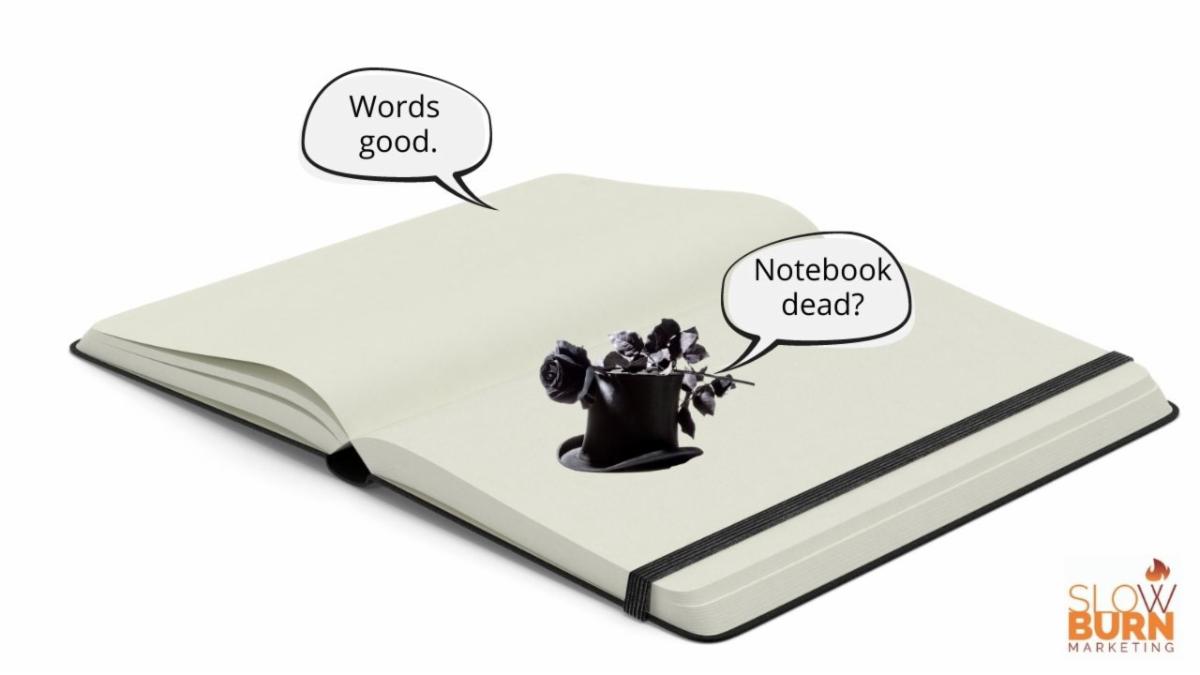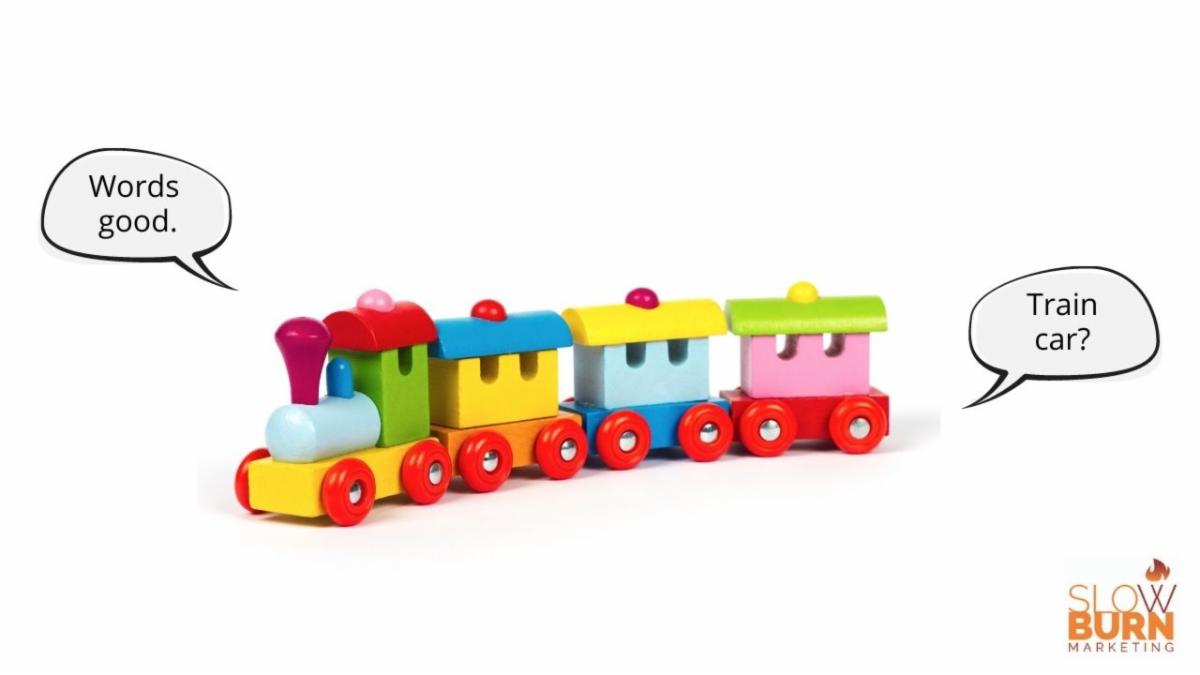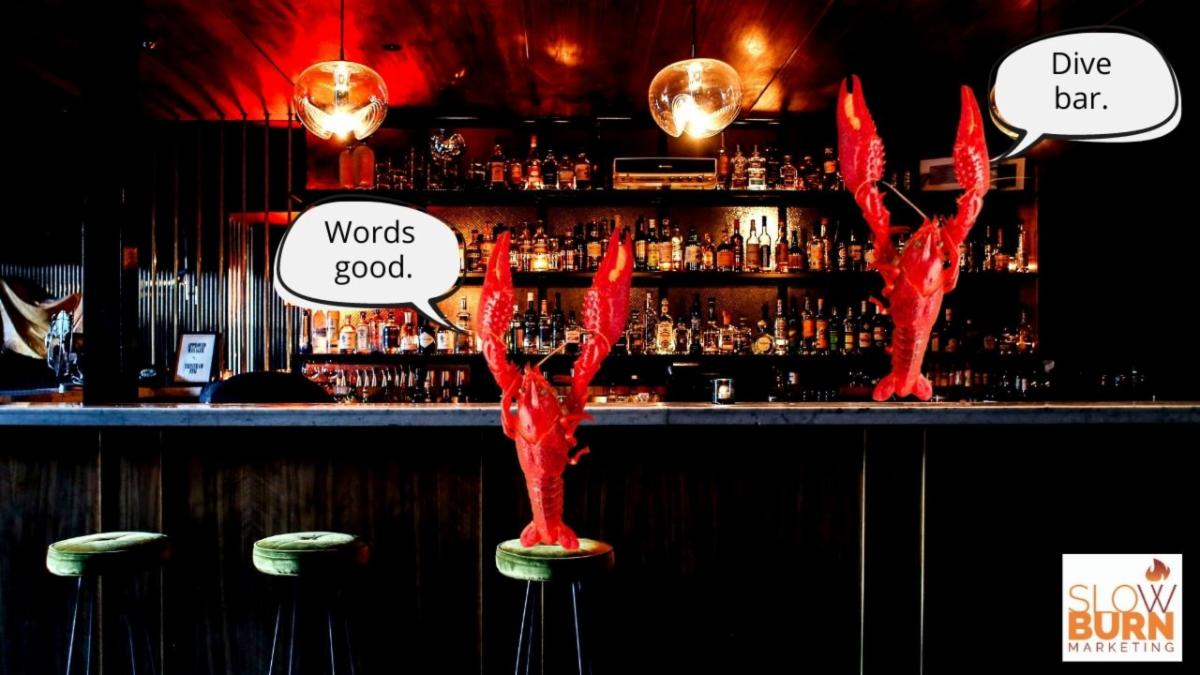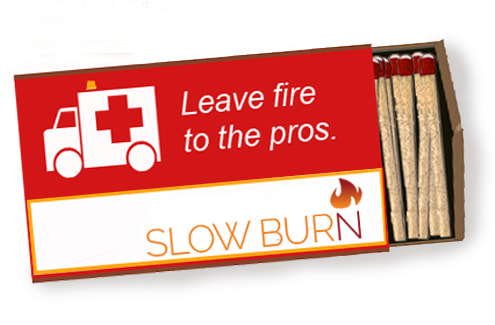|
I AM FILLED WITH GRIEF.
Well, perhaps that’s an overstatement. I am experiencing a modicum of grief. Hmm. Maybe that’s dancing around it. The words are a little cold. I’m bummed because I killed another one. Well, at least that reads like my words. Words that flowed from my own pen. Are these words good? Hard to know. But let’s look at where we are and what has transpired to inspire this muddled meditation on a minimal manifestation. You know what’s dead? Another Moleskine notebook. It was a gift from my long-suffering wife (she’s married to yours truly after all), along with the rather nice pen with which I’m scribbling these words into a newer, lesser notebook. And lemme tell ya, this is not the same. The paper is scratchy. The cover is flimsy. The density is unconvincing. The way it feels beneath the pen and even the sound it makes when you handle the pages.... One of these things is not like the other. One of these things is not "luxury." If you are unfamiliar with the Moleskine notebook, if you missed one of my long ago rants about the joy of longhand lex on pulp-derived paper product, well… Let’s just say you’ve seen this notebook. There’s always somebody somewhere, in a Starbucks or at the conference table, who possesses this marketing marvel. And yes, the Moleskine is indeed a marketing marvel. It’s an expensive notebook that is sold on the backs of the Lost Generation. Some of the marketing hints that these are the same notebooks used in 1920s Paris cafés by struggling American writers with names like Fitzgerald and Hemingway as they scribbled notes for the nascent gems that would become their greatest works before finally dying of alcohol-induced arterial sclerosis or a self-induced gunshot. (Romanticizing the Lost Generation is a dangerous thing. They led mythologized lives that never worked out well on the other side of the myth.) In reality, the fabled Moleskine is a “luxury notebook” that has little to do with the Lost Generation. The company was founded in 1997 in Italy by Francesco Franceschi, and there’s been some consumer debate about “deception,” with this luxury Italian product being produced in China. I have not substantiated the China part. Whatever. Despite the lies, the words bad, and any other drivel that might ensue, the notebook is an honest product. And I still lament the loss just a little when I come to the end of a Moleskine. At the end of this last one, I was writing on behalf of a client. She’s a nice woman in New Hampshire, a doctor of audiology much beloved by her patients and staff. The last lines on the last page of the notebook are: The art of listening. The way you hear it. Changing perceptions. I didn’t even write those things. Honey did. I transcribed as she spoke them. (I do think “the art of listening” has a certain genius to it. It probably won’t make it into the marketing, but it deserves to be somewhere.) But that’s it. The end of the notebook. This morning, in the grayish dark of the pre-dawn Mountain West, I sat down to write about words. And I realized I feel bad because I can’t do so on that foolscap friend that kept me going lo these many months. A tiny grief, perhaps, as I scribble away in this new, lesser livre, bad metaphors and lousy alliterations and all. I miss my old notebook. But I love that my wife gave it to me. And more important, I love my wife and she still puts up with me, so there’s that and everything is relative. Words good. Notebook dead. Life endures. Win a notebook! Yes, you can have your very own copy of a brand new, not-a-Moleskine notebook. Just reply to this email and answer the question: Were these words good, bad, or middling, and why? Just one sentence. The respondent with the best answer wins a brand spanking new notebook for the pleasure of writing like the Lost Generation in Paris cafés minus the Moleskine, the café and the challenges of Paris. The best runners up will be published in a forthcoming Words Good, so be creative and pull no punches! Make me laugh! (Better yet, make Honey laugh.) Enter before midnight on Friday, October 1, 2021. Cheers, Blaine Parker Your Lean, Mean Creative Director in Park City LIGHTNING BRANDING ON AMAZON The Kindle edition of our new book is now available at Amazon for the bargain price of $19.95 For details about our new Lightning Branding courses, both do-it-yourself and we-do-it-with-you editions, click here. (There's even a video of us!)
0 Comments
IT'S DARK. IT'S RAINING.
We’re about to drive 700 miles from coastal Mississippi to central Texas. We are 100 yards into the journey--and have stopped dead. Clanging bells. Flashing red lights. The gates at the rail crossing have descended. The windshield wipers are swiping away. Ker-thunk. Ker-thunk. Ker-thunk. Did I mention that the middle of our route features a tropical depression? We sit there in the dark, watching an immense freight train crawl past. Amid the rumble and the rattle, I’m looking at the markings on the cars. I’ve certainly seen freights before. But I’ve never thought much about the markings on the car. Here now, at railbed level in the dark, I’m looking my headlights shining on the sides of the cars. Each passing car has a four-letter code stenciled in the lower left-hand corner. It’s clearly an identifier of some kind. SHPX RTDX SCYX TLDX There’s so much similarity in the string of cars, and the stenciled codes all have identical "art direction." But there’s one code that stands out from all the others. Ready? UTLX You can see the difference, can’t you? Ha! There is little difference in the four-letter code itself. But right underneath it in simple, block type, it says: “THE TANKCAR PEOPLE.” More faceless codes stream by, followed by another string of “UTLX/THE TANKCAR PEOPLE.” More cars and more codes. Then, several more “UTLX/THE TANKCAR PEOPLE.” I’m fascinated by the detail. Hundred of cars, hundreds of thousands of tons of metal, hundreds of iterations of codes… But only one code that has people involved. And clearly people are involved. This required thought and effort. And now, I’m involved. What are these codes? And who are the tankcar people? Get ready for your rail history lesson of the day. The code is called a “reporting mark.” It identifies the owner or lessee of a piece of “rolling stock” used on a rail network. The code reflects the name of the owner. And all this makes me think of a phrase often used by a late, great radio guru. When talking about why railroads failed when facing competition from airlines, he liked to say: “They thought they were in the railroad business. The didn’t realize they were in the people business.” Of course, he was talking about transporting people and not freight, but you get the gist. So, who is the owner of UTLX? Who are the tankcar people, who clearly know that despite transporting fluids, they’re serving people? Meet the company born in Chicago in 1866 as Union Tank Car Company. The company was established as a challenge to one of the nation’s greatest controversial business figures, John D. Rockefeller. It was also quickly acquired by John D. Rockefeller. In the late 20th Century, the company was acquired by the Marmon Group. In the early 21st century, Marmon Group was acquired by Berkshire Hathaway. (Are we surprised?) Today, UTLX is the largest manufacturer, lessor and maintainer of railcars in North America. It must be true. It’s on their website, which is quite good. It's far more engaging than one might expect from a website about a rail car business. But what’s most interesting about the great and ugly, ironclad products and sprawling corporateness of the ownership of this century and a half old company? It’s about the people. It’s an innocuous little three-word tagline. It has very little “creativity” involved, but is involving on a level that matters. Because down on the ground amid a vast and sprawling sea of anonymity, UTLX pops through and makes a simple statement. In railyards across North America, there are working people who are being reminded that UTLX are the tankcar people. Thousands of UTLX employees, and hundreds of thousands of railroad workers know who the tankcar people are. Even a guy sitting at a railroad crossing in the dark and the rain has some idea about UTLX. UTLX is the code, and the code is about people. Words good. People important. Cheers, Blaine Parker Your Lean, Mean Creative Director in Park City LIGHTNING BRANDING ON AMAZON The Kindle edition of our new book is now available at Amazon for the bargain price of $19.95 For details about our new Lightning Branding courses, both do-it-yourself and we-do-it-with-you editions, click here. (There's even a video of us!) CREATIVE THINKING THAT INSPIRES, SURPRISES, DELIGHTS, AND DELIVERS A DESIRED RESULT.
At its best, that is what good writing is. Opinion? Perhaps. But it’s one of the reasons why advertising copywriting is so much fun. You get to weaponize words on behalf of your client, often blowing up the client’s bottom line in ways that are not possible using other means. But it’s not just about getting the words on paper. It’s about everything leading up to that. And sometimes, there are no words on paper at all. That’s why the peaceful screed colors outside the lines. It’s not just about writing the words. It’s about taking actions that inspire, and being inspired to take action that fuels words. It’s a productive cycle of energetic genesis. Good writing is good thinking. Good thinking makes things happen. Which is why we’re about to talk about a dive bar. (Yes, it’s a left turn. Go with it.) The Fabulous Honey Parker and I have many hobbies. One of them is dive bars. Dive bars are fun, in part because they’re often a place full of surprises and unusual people. Yes, sometimes there might be that loud, drunk woman with a voice like the angry laughter of an enraged crow perched on barbed wire, screeching and cawing about the ball game on the TV. You might also meet the retired schoolteacher who’s a millionaire real estate entrepreneur with a portfolio of local residential rental properties (and a much nicer laugh than the crow lady). You might meet a local criminal attorney who’s still wearing his suit from court that afternoon. Or the software engineer, sitting with his phone out, reviewing updates to a program under development. These people are there, and none of them know your name. Yet. Right now, they’re on the Mississippi Gulf Coast in a little dive bar with a fishing theme. Fishing happens around here. Dive bars, though? Not as often as they used to. It’s an artsy little town that has undergone a degree of gentrification. As one old-timer local told me, he’s just about the last of his friends who lives here. The place has become too fancy. Nonetheless, some of the dive bars persevere. They are dimly lit places with dark wood furnishings, out-of-state license plates on the walls, dollar bills tacked to the ceiling, and various surprises hidden throughout the (ahem) decorating. This Mississippi dive bar is different. Yes, it’s filled with local characters. But it’s also nationally recognized. It is lauded as one of the nation’s best dive bars. And it happens to be a pandemic survival story. Hello, pivot! One of the big selling features of this bar is they have an excellent low-country boil. If you’re not familiar with low-country boil, it’s some form of seafood (usually crawfish, shrimp or crab, or a combination thereof). The seafood is boiled in abundant spices along with sausage, corn and potatoes. That’s the traditional lineup. My personal boil recipe includes a rotating cast of green veggies to help dispel one’s overriding sensation of guilt that comes from scarfing down potatoes and corn alongside crusty bread, all with no greens. A boil is often dumped out onto a communal table and consumed with one’s hands. Beer is often in evidence. A good low-country boil makes people’s heads explode. And during pandemic lockdown, there was no boil happening inside this bar because nobody was allowed inside this bar. So the owner decided to give people something he felt they needed: a way to get boil takeout. Despite no formal drive-thru architecture (it’s a dumpy old stucco building covered in banners and beer signs), this man turned his bar into a drive-thru boil emporium. The inside of the bar was filled with boil pots, takeout containers and crawfish. A new banner outside proclaimed “Crawfish boil drive thru!” And people drove through, driving away with boiled low-country comestibles. This man’s revenue also went through the roof. And no, he’s not a writer. He owns a bar. He did write a simple sign advertising his product. He also wrote some simple, fun Facebook posts showing his promise of masked-up drive-thru boil. They featured a giant photo of a crawfish waving his claws, saying “You want some of this?!” And it was good. And profitable. Good writing is good thinking. Good thinking makes things happen. It’s thinking beyond the page. Good writers are often cogitating on the world, and how to put thoughts into action. Sometimes, that action is a pen across the page. Sometimes, it’s realizing how to best serve the customer. And sometimes, it’s just going into a strange new dive bar somewhere and seeing how other people reinvent their world, one dimly-lit, laughter-filled encounter at a time. Cheers, Blaine Parker Your Lean, Mean Creative Director in Park City LIGHTNING BRANDING ON AMAZON The Kindle edition of our new book is now available at Amazon for the bargain price of $19.95 For details about our new Lightning Branding courses, both do-it-yourself and we-do-it-with-you editions, click here. (There's even a video of us!) ONE OF THE SIMPLEST TIPS FOR BETTER WRITING INVOLVES…NOT WRITING
Do you want to be a better writer? This is the simplest possible tip you will ever get on how to achieve that. It’s so simple, it might make you angry. You might even lash out at this piece of writing and hurl it across the room against the wall. Since you are probably reading this on a high-priced digital device of some kind, such a reaction is not in the best interests of said device. If you want to be a better writer, do this: Become a better reader. It doesn’t matter what kind of writing you want to do. Reading with an analytical eye helps you make your own writing better. This is especially useful (and dare I say easy?) when it comes to dialogue. Some writers required to create radio read this screed. I know they feel themselves challenged by the task of putting words into the mouths of their characters. “But isn’t listening to well-written dialogue important?” Yes. But so is seeing it on the page. (We’re talking about the script page. If you're writing scripts, reading literary dialogue is something else altogether.) Reading anything with an analytical eye helps reveal things like the structure, pacing and word choices that make writing come alive like Frankenstein’s monster on a thunderstorm night charged with verbal lightning. That was a stupid sentence. And reading it, you can get a quick lesson in how not to behave on the written page. Does your job require writing to persuade? If so, reading the writing that persuades you is a good first step. It’s how you hone the blade of that pen that is ostensibly mightier than the sword. And something else happens when you read good writing: where before there may have been only a fear of the blank page, you find something new and thrilling. You’ll feel the thrill of motivation. Read. Write. Be free. Cheers, Blaine Parker Your Lean, Mean Creative Director in Park City LIGHTNING BRANDING ON AMAZON The Kindle edition of our new book is now available at Amazon for the bargain price of $19.95 For details about our new Lightning Branding courses, both do-it-yourself and we-do-it-with-you editions, click here. (There's even a video of us!) |
AuthorBlaine Parker is prone to ranting about any and all things related to brand. In many ways, he is a professional curmudgeon. While there is no known vaccine for this, the condition is also not contagious. Unless you choose it to be so. Archives
February 2022
Categories
All
|
|
© Copyright 2020 Slow Burn Marketing LLC |





 RSS Feed
RSS Feed

